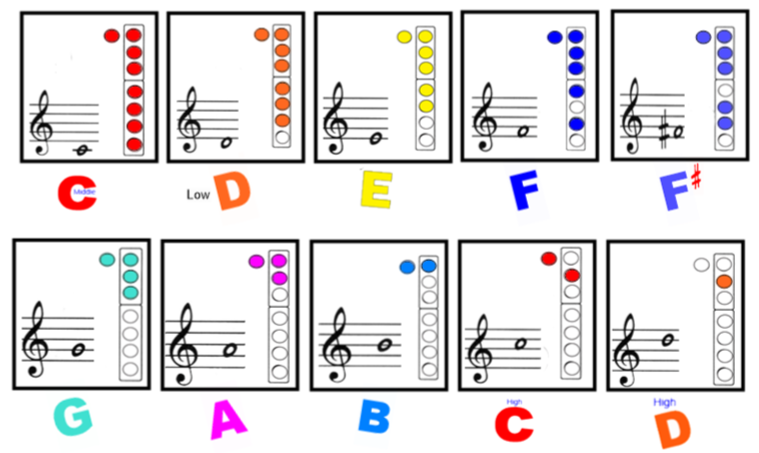

Here is my procedure (this is after you initially teach the fingering): I introduce the note just like I describe above.įor step #3, I’ll share my favorite song for introducing F# in the next section. We’ve already done step #1 in the previous section.
#Musical note c recorder how to#
Over the years, I’ve how to teach new notes better by moving through three phases: How To Teach F# On Recorder: Procedure For KidsĪs a teacher, I always struggled to get my students to learn new notes, especially trickier ones like F# on recorder. Between the notes in question, they are already at a half step. There are only 12 pitches in traditional Western music, and there is no note between these pitches.Įach of the 12 pitches is a half step apart. Why can’t you put a note between B→C or E→F?

If the in-between pitch is lowered from the original, we give it a flat, shown with a b.įor the note F#, knowing what we know now, we can see this note is a raised F.

If the in-between pitch is raised from the original, we give it a sharp, shown with a #. These are altered pitches or accidentals. In between these pitches except for E→F and B→C is another pitch. Natural pitches are indicated by letters: A, B, C, D, E, F, and G. I’ve mentioned accidentals before, but for those of you who don’t know what this is, this section is for you.Īn accidental, for those of you who don’t know, is an altered pitch from the natural pitch.
#Musical note c recorder free#
Feel free to copy or share with link to dynamic music room.Ĭheck out the soprano recorder fingering chart guide for more details on all the basic recorder notes. You also find it helpful to check out this chart. This is how I personally think of recorder fingerings.įor F#, I think: Thumb, 1, 2, 3, (other hand), 5, 6


 0 kommentar(er)
0 kommentar(er)
